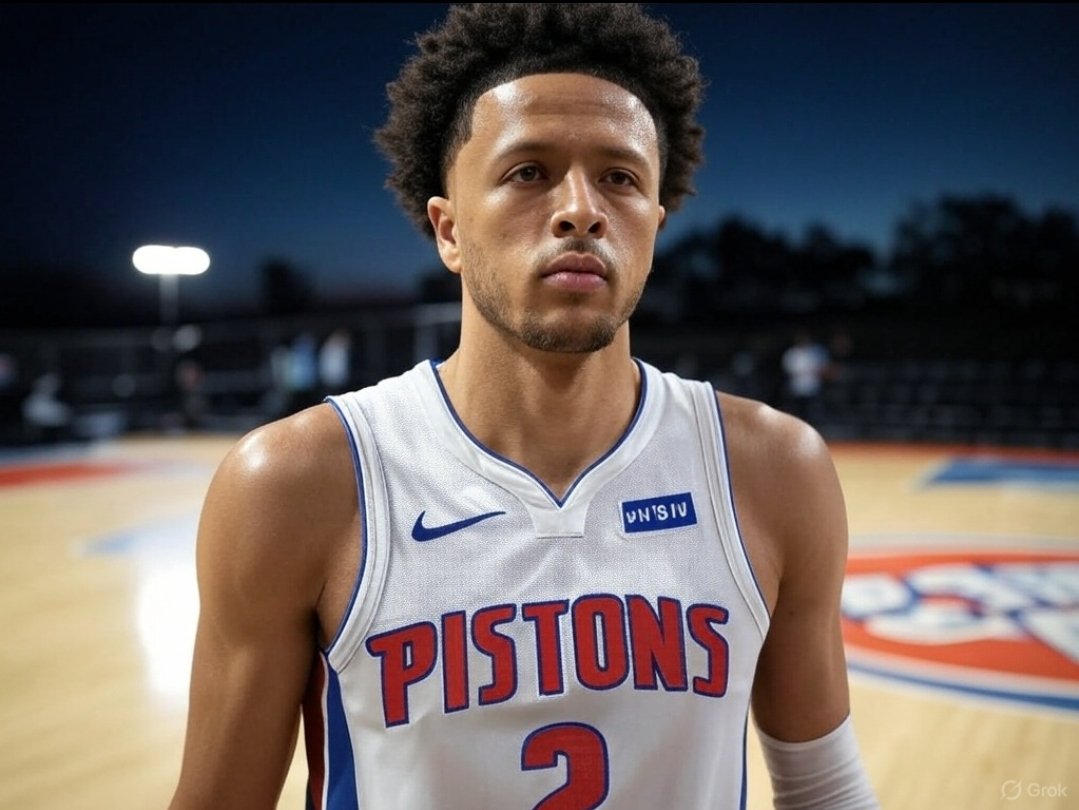
Detroit Pistons 2026 Roster Upgrades: Key Players to Pursue
The Detroit Pistons, coming off a 44-38 season and a first-round playoff exit against the New York Knicks in 2025, showed significant improvement but need roster upgrades to advance deeper into the 2026 playoffs.
Their current core, led by Cade Cunningham, Jalen Duren, Jaden Ivey, Ausar Thompson, and Ron Holland, is young and promising but lacks veteran experience, shooting, and size upfront. Based on team needs, salary cap flexibility (approximately $14 million under the cap), and potential trade or free agency targets, here are five realistic players the Pistons could pursue to bolster their roster for a deeper playoff run in 2026.
These suggestions prioritize addressing weaknesses in shooting, playmaking, defense, and frontcourt depth while considering the Pistons’ financial and draft asset situation.
Domantas Sabonis (Trade Target, Sacramento Kings)
- Why He Fits: Sabonis, a three-time All-Star, would add elite playmaking, rebounding, and scoring in the frontcourt, complementing Cunningham’s guard play. His ability to facilitate from the high post and dominate the boards (13.7 rebounds per game in 2024-25) addresses Detroit’s need for size and basketball IQ. Pairing him with Duren or Stewart could create a versatile frontcourt.
- How to Acquire: Sacramento’s roster overhaul after trading De’Aaron Fox makes Sabonis a potential trade candidate. Detroit could offer a package including Jalen Duren, Ausar Thompson, and future second-round picks (e.g., Toronto’s 2025 second-rounder). The Pistons’ draft assets, including multiple second-round picks through 2031, give them flexibility to sweeten the deal without sacrificing Cunningham or Holland.
- Impact: Sabonis elevates Detroit to a top-6 seed, providing a second star to reduce Cunningham’s offensive burden and improve playoff poise.
Anfernee Simons (Trade Target, Portland Trail Blazers)
- Why He Fits: Simons, a high-scoring guard (22.6 points per game in 2024-25), brings much-needed perimeter shooting and secondary creation. His 38.7% three-point shooting would stretch defenses, opening driving lanes for Cunningham and Ivey. As a 2026 free agent, he’s a short-term commitment with long-term potential.
- How to Acquire: Portland’s need for a roster shakeup makes Simons attainable. Detroit could offer Tim Hardaway Jr. (expiring contract), Marcus Sasser, and a combination of second-round picks (e.g., 2027 and 2029). This trade preserves core pieces while adding a proven scorer.
- Impact: Simons boosts Detroit’s bench scoring and backcourt versatility, addressing their playoff turnover issues and lack of shooting (noted as
Naz Reid (Free Agent Target, Minnesota Timberwolves)
- Why He Fits: Reid, the 2024 Sixth Man of the Year, offers frontcourt versatility, shooting 41.4% from three, and defensive tenacity. At 26, he fits Detroit’s timeline and could play alongside Duren or as a stretch-five backup, addressing the lack of size upfront exposed in the playoffs.
- How to Acquire: As a free agent in 2026, Reid could be signed using Detroit’s cap space. A 3-year, $40-45 million deal is feasible given their low payroll ($144.8 million, per HoopsHype). Detroit’s pitch includes a larger role than in Minnesota, where he’s behind Gobert and Towns.
- Impact: Reid’s floor-spacing and defensive versatility make him a perfect fit for J.B. Bickerstaff’s system, adding depth to survive grueling playoff series.
Collin Sexton (Trade Target, Utah Jazz)
- Why He Fits: Sexton, a dynamic scoring guard (18.7 points per game in 2024-25), brings toughness, playmaking, and playoff experience. His ability to create off the dribble would ease Cunningham’s load and provide a spark off the bench or as a starter if Ivey shifts to the wing.
- How to Acquire: Utah’s rebuilding phase makes Sexton a trade candidate. Detroit could offer Dennis Schröder (expiring contract), a 2027 second-round pick, and a young prospect like Bobi Klintman. Sexton’s $18.1 million salary fits within Detroit’s cap space, and his contract runs through 2027, aligning with their core.
- Impact: Sexton’s scoring and clutch play address Detroit’s crunch-time struggles, making them more competitive in close playoff games.
Bruce Brown Jr. (Free Agent Target, Toronto Raptors)
- Why He Fits: Brown, a Detroit native and 2023 NBA champion, brings veteran leadership, defensive versatility, and playoff experience. His ability to guard multiple positions and hit 33.6% of his threes adds depth to the wing, addressing the Pistons’ need for IQ and defensive stability (exposed against the Knicks’ perimeter attack).
- How to Acquire: Brown is a free agent in 2026 and could be signed for $10-12 million annually using cap space. His familiarity with Detroit and desire to play for a contender make him a realistic target. The Pistons’ low payroll gives them an edge over cap-strapped teams.
- Impact: Brown’s two-way play and championship pedigree elevate Detroit’s wing rotation, providing the grit needed for a second-round push.
Strategic Considerations:
- Cap Space and Assets: Detroit’s $14 million in cap room and multiple second-round picks (e.g., two in 2027, three in 2028) allow them to absorb contracts or sign free agents without entering the luxury tax. They must decide whether to re-sign expiring players like Schröder, Beasley, Hardaway Jr., and Reed, which could impact cap flexibility.
- Trade Limitations: The Pistons lack a 2025 first-round pick (conveyed to Minnesota) and cannot trade a first-rounder until 2029 due to pick protections owed to New York. This makes second-round picks and young players like Sasser or Klintman key trade chips.
- Team Needs: There’s no doubt they need shooting, size, and basketball IQ as critical needs. Adding a stretch big (Reid), a scoring guard (Simons or Sexton), and a defensive wing (Brown) balances the roster while pursuing a star like Sabonis accelerates contention.
Final Analysis
Targeting Sabonis, Simons, Reid, Sexton, and Brown addresses Detroit’s core weaknesses while leveraging their cap space and draft assets. Sabonis and Simons provide star power and scoring, Reid and Brown add versatility and playoff savvy, and Sexton brings secondary creation.
These additions could propel the Pistons past the first round, potentially to the Eastern Conference Semifinals, by enhancing their offense, defense, and depth.



